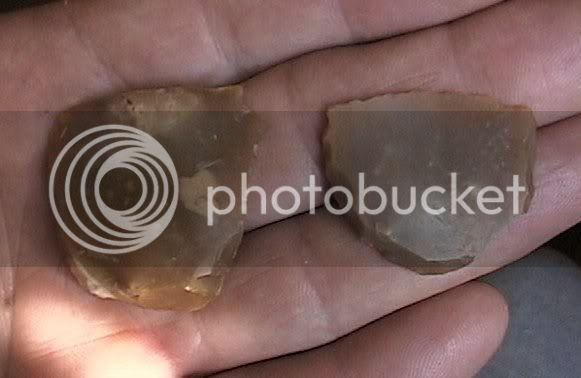I took my snaphaunce out to finish sighting it in today. The lock is still finicky - getting a lot of non-fires, but no flashes in the pan. It seems to like flints with the bevel side up and very sharp.

I was pleased today in that I got a nice vertical string after filing down the front sight with each shot. I'm still not there though. I had to quit because a lot of hard fouling was building up just above the breech, making it hard to seat the ball. I'm a lot closer now, probably minute-of-deer at 25 yards.
Oh, and by the way, I was shooting right next to a corn field, and the pheasants were really flying after I started shooting. A couple flew right across the road after my first shot. I should have been pheasant hunting.

I was pleased today in that I got a nice vertical string after filing down the front sight with each shot. I'm still not there though. I had to quit because a lot of hard fouling was building up just above the breech, making it hard to seat the ball. I'm a lot closer now, probably minute-of-deer at 25 yards.
Oh, and by the way, I was shooting right next to a corn field, and the pheasants were really flying after I started shooting. A couple flew right across the road after my first shot. I should have been pheasant hunting.





